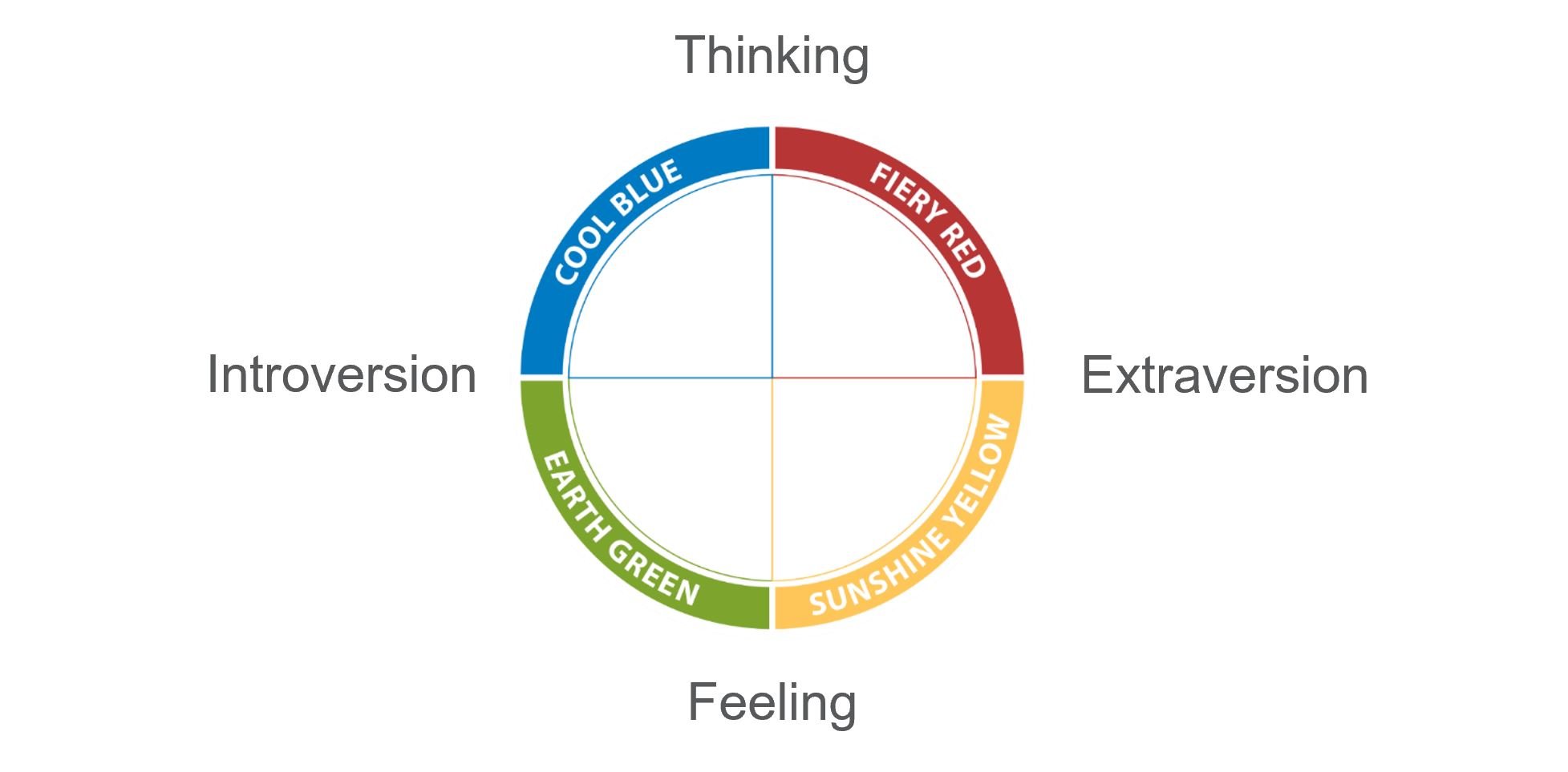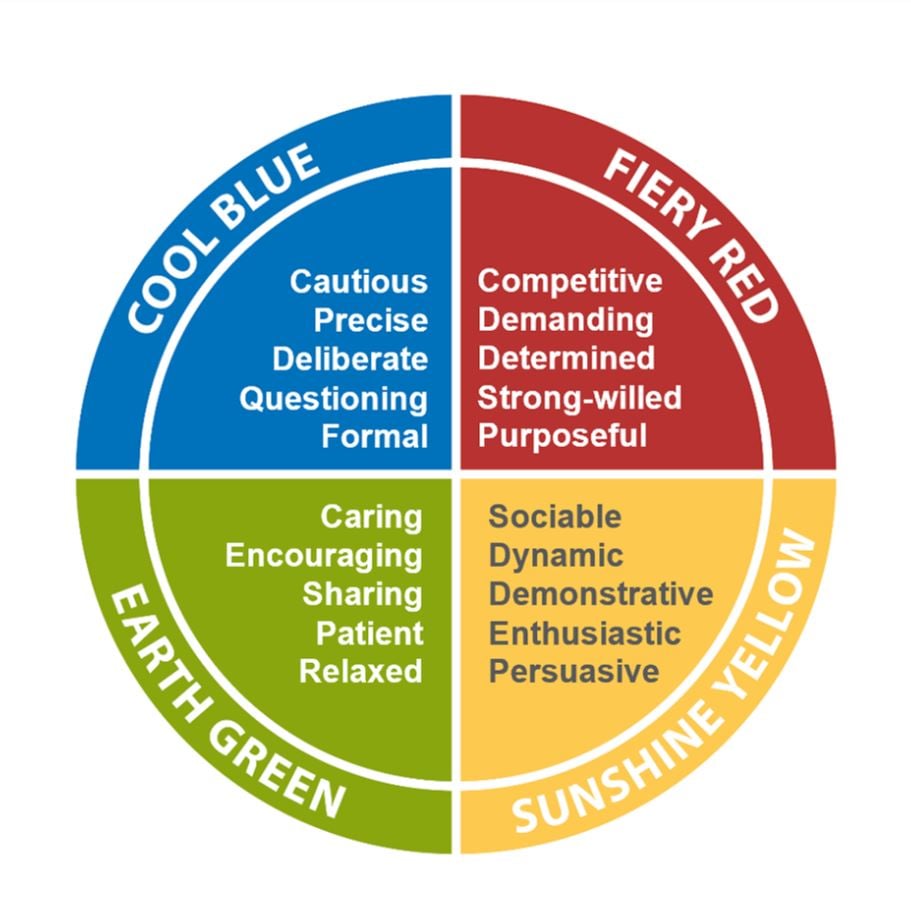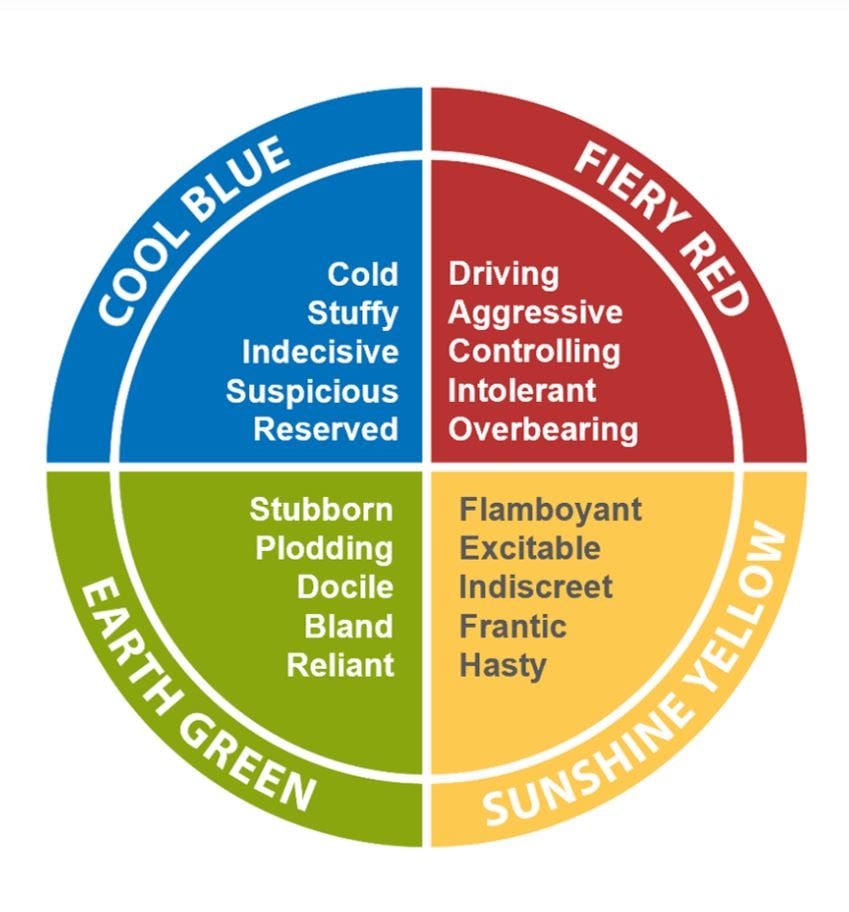Change how you communicate, change the relationship
There’s a saying that people don’t quit jobs, they quit bosses.
While there are times when an exit strategy is the best move, there are also times when you can take meaningful steps to improve your relationship and create trust with your manager.
We don’t pretend to be experts in the field of conflict management, but after almost 30 years, nine million profiles and tens of thousands of coaching conversations, we’ve learned a thing or two about the role of poor communications in relationship breakdown.
Could improving your communication skills save your job?
The communication strategies we outline below will improve your relationships with others and help you mitigate your own behaviors that could be negatively impacting those around you.
Whether or not you choose to stay at your role, it’s important to understand why tension may occur given different communication preferences, and the steps you can take to improve the situation.
Before we jump forward, it’s important to step back and talk about the new number one tool in your communications toolbox: the language of color energies.
Approaching your interpersonal relationships using the language of color energies, when done well - even when done half-way- changes everything.
Enhance communication skills with the language of color energies
Our research shows that people have communication and behavioral preferences aligned with Carl Jung’s personality theory:
- Extraversion vs. introversion
- Sensation vs. intuition
- Thinking vs. Feeling
It’s the unique combination of these dimensions that make us who we are and influence how we communicate and how we wish others would communicate with us.
People can share an interest, yet value different kinds of communication styles when talking about it. A large part of miscommunication and frustration in the office comes from assuming that others value the same communication style we value and will react to it as we would. But nothing could be further from the truth.
Understanding differences between our communications styles and learning how to honor those differences is crucial to keeping a relationship on even footing.
Jung’s theories are startlingly effective, but they’re also complex, which is why, in 1993, Insights founders created a model that could easily be applied in a business environment. Today that model consists of four color energies: Fiery Red, Sunshine Yellow, Cool Blue and Earth Green.
These colors combine two aspects of Jung’s theory: how we interact with the world (extraversion vs. introversion) and how we make decisions (thinking vs. feeling)

Introverted
Thinking: Cool Blue - Internal focus on knowledge, quality, reflection and consideration
Feeling: Earth Green - Internal focus on values, relationships, trust and support
Extraverted
Thinking: Fiery Red - External focus on action, direction, results and speed
Feeling: Sunshine Yellow - External focus on people, involvement, collaboration and ideas
Fact: People who lead with different color energies often show up differently in the office.
Color energies on a good day: 
Start with self-awareness
Which color energy do you feel best reflects you today?
Don’t worry if you identify with a few. We all have a combination of the four color energies within us, and intuitively dial certain color energies up or down depending on our mood and what’s happening around us.
For example, perhaps you tend to lead with Fiery Red energy, extroverted and action-oriented. You may want – and expect – your projects to move along quickly. It’s all about the quick decisions and positive results, lots of action and the freedom of not having to overthink things. If something isn’t happening quickly enough, no problem, you can easily jump in and finish it yourself, and there’s nothing like a sea of checkmarks in your task list to make you feel at one with the world.
If Fiery Red color energy could talk, it would say, “Be brief, be bright, be gone.”
But there may also days when you feel lower key and cautious. On those days, you may dial down that Fiery Red color energy and instead lead with Cool Blue, introverted and process oriented. You may want to take a deeper dive into the information before making a decision. Those check marks don’t happen without a good workflow, and wouldn’t it be nice to set up a process so you can keep track of things?
If Cool Blue color energy could talk, it would say, “Give me details!”
Or perhaps it’s a Sunshine Yellow kind of day. You may feel social, extroverted and excited about your projects and co-workers. If you can’t meet over lunch as a team, you might be inclined to schedule a virtual team coffee simply to touch base and swap stories, and most of those stories will probably come from you. You may feel like congratulating a colleague for their amazing performance and secretly hope to be congratulated as well.
If Sunshine Yellow color energy could talk, it would say, “Involve me.”
Are you leading with Earth Green color energy today? If so, you might be quietly concerned about a colleague and discreetly reach out to make sure they’re okay. When asked about your thoughts on new software, your mind might immediately analyze what its impact will be on the people in your organization. You love mentoring and encouraging others, so it’s no wonder people often choose to confide in you.
If Earth Green color energy could talk, it would say, “Show me you care.”
You may lead with one energy most of the time or a combination of the four, which is why it’s important to frequently check in with yourself throughout the day, so you can be aware of where you’re at, at any given time.
Consider this: If someone were to ask how you’re feeling today, wouldn’t it be great, rather than spewing off the long paragraphs above, to simply say, “I’m feeling Fiery Red.”
Assuming your colleague speaks the language of color energy too, they’ll understand exactly what that means, and they’ll be able to adapt their behavior and communication style to improve the dynamic between the two of you.
Progress to other-awareness (as in, your manager)
Now that you understand a bit about how color energies work, the next step is developing the ability to recognize them in others; namely, your manager.
In your experience, what does your manager value most when it comes to behavior and communication styles?
Do they like a lot of details and time to ruminate on them before making a decision (typical of Cool Blue), or perhaps they simply want the abbreviated version so they can quickly move on (typical of Fiery Red). They may expect to see signs that you’re invested in the outcome of project (typical of Earth Green) or perhaps they expect that you can persuade your colleagues to buy into the project at hand (typical of Sunshine Yellow).
If you can understand what color energy they are leading with in the moment, you can adapt how you communicate.
For example, if your manager is leading with:
Cool Blue: Better have robust data ready to go and present it a day or two in advance so they have time to consider it.
Fiery Red: Don’t overwhelm with details! Give them only what they need to know to make a quick decision. Be ready with succinct answers and a recommended plan of action.
Sunshine Yellow: Find out what excites them about the project at hand and share your own positivity as well. Suggest opportunities to collaborate with others to achieve goals, both within the team and with other colleagues.
Earth Green: Look for ways to build an authentic personal connection with your manager. Ask about their values and share your own. Talk about how you can support your manager and others through your role.
Diffuse tension using the language of color energies
There are two sides to every coin, and just as it’s important to understand how we show up when leading with the four color energies on a good day, it’s equally important to know how we show up on a bad day.
Check in with yourself and then observe your manager. Are either of you behaving: (use wheel)

Now we edge closer to the heart of conflict...
For example, let’s say your manager tends to lead with Cool Blue energy and you lead with Sunshine Yellow energy. What issues might arise from your point of view?
We've included a few communication skills examples using the language of color so you can see how it can diffuse tension.
Sunshine Yellow reacting to Cool Blue:
Without awareness: “All they care about is the data, not how excited the team is or the incredible collaboration between departments.”
With awareness: “They value process and data, so I’ll present them with the numbers first and later on I can tell them about the success of our collaborations.”
Each color energy interacts differently…
Earth Green reacting to Fiery Red:
Without awareness: “They’re always in such a rush and they’re abrasive! They don’t care about who they step on to get results.”
With awareness: “She wants to move on quickly because she values my time and wants get this project done so that we can all look good to our CEO.”
Fiery Red reacting to Sunshine Yellow:
Without awareness: “If they’re not talking over me, they’re talking to me. Don’t they know I have work to do?”
With awareness: “They are excited about this project and want to collaborate. I can show support by taking an extra five minutes to listen and can share what I'm energized by as well.”
Cool Blue reacting to Earth Green:
Without awareness: “This is fluff. Where's the data?”
With awareness: “They value purpose. I can show them how the data supports the organization’s ‘why’ and how it supports each individual member of the team.”
Differences in color energy preferences shouldn't inspire judgment
Understanding why someone acts as they do may allow you to release judgment. Also, knowing it’s not you can be a weight off your shoulders and allow you to exhale some of that stress you’ve been holding in.
You may not always share your manager’s perspective, you have your own color energy preferences, but realising how their color energy preferences interact with yours, and how to honor that, is a powerful shift in awareness.
With this new perspective, you may find that your manager cares more than you think, but they’re simply inclined to express their support differently than you would express it.
The important thing to remember is that, in most cases, incompatibility doesn’t mean that someone is a bad person or wishes you harm. Sometimes all it means is that people haven't learned (yet) how to meaningfully communicate their support to each other.
Even if one person in a relationship adopts and applies the language of color energy, the dynamic can transform interpersonal communication, allowing space for you and your manager to be more honest and supportive. This is the basis of trust and trust is what empowers healthy relationships in the workplace.
Insights is a people development company creating a world where people understand themselves and others, and are inspired to make a positive difference in everything they do. If you’d like to learn how we can help the people in your organization to communicate better through the language of color energy, drop us a line and let’s get started


